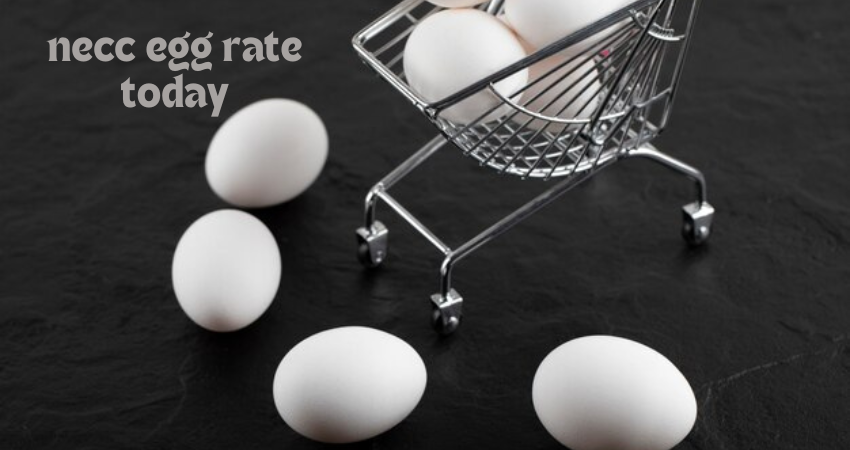In the cradle of dawn, when golden yolks rest silently within fragile shells, lies the untold story of the humble egg. Unassuming in its perfection, the egg has long been a symbol of life, rebirth, and sustenance. But hidden beneath its delicate shell is a tale as intricate as its whorled patterns—an economic pulse that beats steadily, dictating the livelihoods of millions. This is the story of the necc egg rate today, a tale of farmers, markets, and the ever-shifting dance of supply and demand.
As you crack open this narrative, prepare to be whisked into the folds of history, stirred by the rise and fall of fortunes, and seasoned with resilience and innovation. Let us embark on this journey through time to explore the evolution of the National Egg Coordination Committee (NECC) and the story behind its daily egg rate—a seemingly simple number that carries the weight of an entire ecosystem.
The Origins of NECC: A Need for Unity
The story begins in the early 1980s, a period of economic turbulence for India’s poultry farmers. The market was fragmented, disorganized, and weighed down by middlemen who profited at the expense of producers. Eggs, despite being a staple source of nutrition, were undervalued, leaving farmers struggling to make ends meet.
Against this backdrop of chaos emerged a beacon of hope—the National Egg Coordination Committee (NECC). Founded in 1982, the NECC was born from the vision of Dr. B.V. Rao, a man often revered as the father of India’s poultry industry. His dream was simple yet profound: to unite farmers under one umbrella, giving them the power to determine fair prices for their produce and secure a sustainable livelihood.
Under his leadership, the NECC became a cooperative platform, a voice for the voiceless. It was more than an organization; it was a revolution. A revolution that turned a scattered community into a cohesive force, capable of negotiating prices, creating awareness, and safeguarding the interests of millions.

The Birth of the Daily Egg Rate: A Game-Changer
In the heart of this movement lay an innovative concept: the daily egg rate. For decades, the price of eggs had been dictated by an opaque network of intermediaries, their calculations shrouded in secrecy. But NECC, with its democratic ethos, sought to change that.
The daily egg rate was introduced as a transparent, farmer-centric pricing mechanism. Every day, representatives from various egg-producing zones across India would gather to assess the market dynamics—supply, demand, feed costs, and consumer trends. Together, they would set a fair price, one that reflected the realities of the market while ensuring farmers earned their due.
The Evolution of the Egg Market
As the NECC egg rate gained prominence, it became a cornerstone of India’s poultry economy. But the journey was far from linear. The egg market, like the seasons, ebbs and flows with time, responding to myriad factors:
Supply and Demand Dynamics
The rhythm of the egg market is governed by supply and demand. Festivals, school vacations, and seasonal dietary preferences create surges and slumps in consumption. Meanwhile, production is influenced by feed costs, disease outbreaks, and climatic conditions.
The Role of Technology
The 21st century brought technological advancements that revolutionized poultry farming. Better breeds, improved feed formulations, and sophisticated disease management techniques boosted productivity. As production increased, so did the complexity of price determination.
The Global Connection
The NECC egg rate, though deeply rooted in India, is not immune to global influences. Fluctuations in international grain prices, trade policies, and global pandemics like COVID-19 ripple through the system, impacting local prices.
The Emotional Ties: Farmers and the Egg Rate
For the millions of poultry farmers across India, the NECC egg rate is more than a number. It is the culmination of their toil, sweat, and resilience. These are people who rise before the sun, tending to their flocks with a care that borders on reverence.
When the egg rate rises, it brings with it a wave of relief—a promise of better earnings, a step closer to paying off debts, a sigh of hope. But when it falls, the weight of despair is palpable. For many small-scale farmers, every rupee matters.
The NECC recognizes this delicate balance and has become more than a coordinator; it is a guardian, advocating for policies that protect farmers from exploitation and instability.
The Cultural Significance of Eggs in India
Before delving deeper into the economics, let us pause to reflect on the cultural resonance of the egg in India. A symbol of simplicity, eggs transcend barriers of caste, creed, and cuisine. They grace the plates of roadside dhabas and five-star hotels alike, a democratic food loved by all.
In rural households, eggs are often a child’s first taste of protein. For the urban dweller, they are a quick and versatile meal. For athletes and bodybuilders, they are a powerhouse of nutrition. This universality adds another layer of importance to the NECC egg rate—it affects not just farmers, but consumers from every walk of life.
Challenges Faced by NECC
No great endeavor is without its challenges, and the NECC is no exception. The journey to establish and sustain a fair pricing mechanism has been fraught with hurdles:
Regional Disparities
India’s vastness is both its strength and its challenge. Egg production varies significantly across regions, leading to disparities in supply and pricing. Harmonizing these differences is an ongoing task for the NECC.
Middlemen and Market Manipulation
Despite NECC’s efforts, the shadow of middlemen looms large. In some regions, they continue to wield influence, distorting prices and undermining the transparency NECC strives for.
External Shocks
From avian influenza outbreaks to disruptions caused by lockdowns, external shocks often destabilize the delicate equilibrium of the egg market.
The Digital Revolution: Modernizing NECC
In recent years, NECC has embraced the digital age, leveraging technology to enhance its operations. Mobile apps now provide real-time updates on the daily egg rate, empowering farmers with instant access to critical information. Social media platforms serve as tools for awareness campaigns, bridging the gap between farmers and consumers.
The NECC Egg Rate Today: A Snapshot
As the sun rises each day, the NECC egg rate emerges as a reflection of the current market landscape. It is a testament to the organization’s enduring commitment to transparency, fairness, and the welfare of farmers.
Today, the NECC egg rate is not just a figure displayed on boards or apps—it is a barometer of an entire ecosystem, a symbol of resilience, and a reminder of the power of unity.

FAQs About the NECC Egg Rate
1. What is the NECC egg rate?
The NECC egg rate is the daily price of eggs set by the National Egg Coordination Committee based on market dynamics.
2. Why does the NECC egg rate fluctuate?
The rate fluctuates due to changes in supply, demand, feed costs, and external factors like disease outbreaks or economic policies.
3. How does NECC determine the egg rate?
NECC determines the rate through consultations with representatives from various regions, taking into account production costs, market trends, and regional disparities.
4. How does the NECC egg rate impact farmers?
The egg rate directly affects farmers’ earnings, influencing their ability to sustain their livelihoods and invest in their farms.
5. Where can I check the daily NECC egg rate?
The daily NECC egg rate is available on the official NECC website, mobile apps, and various news outlets.
6. How does NECC support farmers during crises?
NECC advocates for farmer-friendly policies, provides support during disease outbreaks, and ensures fair pricing mechanisms to protect farmers from exploitation.
Conclusion: A Legacy of Resilience
The necc egg rate today is more than a measure of economic value—it is a legacy of resilience, a story of people who dared to dream of fairness and unity. From its humble beginnings to its present-day significance, it remains a testament to the power of collective action and the indomitable spirit of India’s poultry farmers.
As we close this chapter, let us remember the hands that tend to the birds, the voices that echo in NECC meetings, and the countless lives touched by a simple number. The story of the NECC egg rate is, at its heart, a story of humanity.


